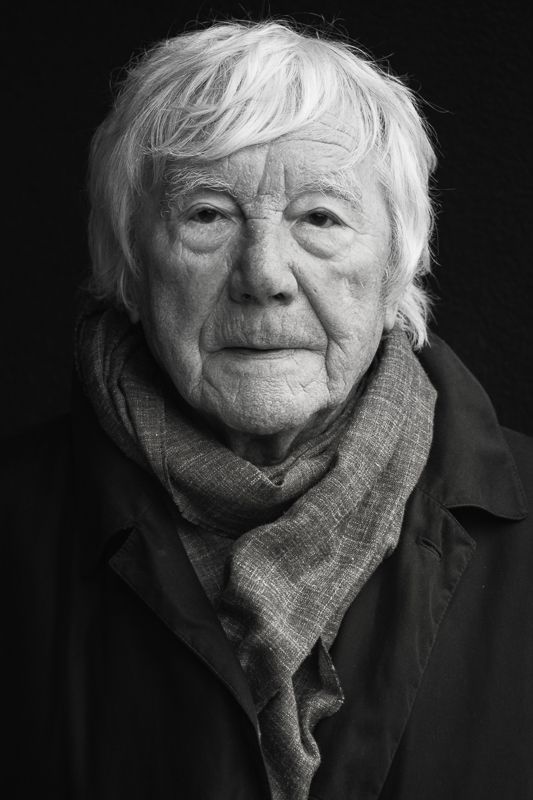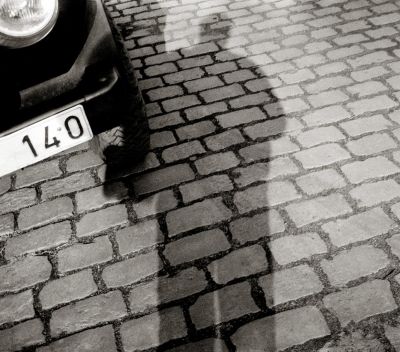Tadeusz Rolke. A master of documentary photography
Mediathek Sorted









































Thanks to the grant, Rolke was able to visit Germany again for the first time since 1945. Above all, however, this was his first visit to West Germany (during the war he had only been in the east – author’s note). He was very impressed by the level of affluence visible everywhere:
“There was an enormous difference in the kind of civilisation between the two countries at that time. This standard of living and the shops... There was no comparison. In a word: the Germans had won the war, and Poland had lost. That was my conclusion.”[8]
Rolke decided not to return to Poland after the grant expired. His first commissions were for film productions, where he created portraits of the actors and took photographs on set. Later, he moved to Hamburg, where he worked for a short time as an employee of the Heinrich Bauer Verlag publishing house. He later became a freelancer, taking photos of Hamburg artists for various different companies. During this time, he produced his first photo essays, which were published in the press. Rolke also travelled around the country and took up work for Inter Nationes, a government-run agency in Bonn whose tasks included cultural PR work for the Federal Republic of Germany. He took portraits of major West German artists, including the painter Gerhard Richter, the painter and “Happening” artist Wolf Vostell and the versatile Joseph Beuys. The photograph of Beuys leaning against the hood of a VW Beetle is one of Rolke’s most famous images.
During this period, the turbulence in Poland during the 1970s, the growing protests against the government and the repressive measures against the “intransigents” engendered an increased interest in the country and its people. Rolke’s coverage appeared in the most popular West German magazines, from “Stern”, “Die Zeit” and “Der Spiegel” to “GEO”. His photographs of the famous Hamburg fish market attracted a great deal of attention. Rolke succeeded like no-one else in capturing the unique mixture of the bustle of the fish market and the colourful life that also played an important role there. The photographs of the fish market were also Rolke’s largest photo essay. He later remembered the market as follows:
“The air at this market pulsed with very interesting social activities. Visiting it was like going on a hunt. It was always really exciting to wonder how many pictures I would take over the course of the day. By the afternoon, I would already know: five photos are a good day. (...) I was fascinated by the way the people behaved, by their interactions and their diversity, by the bars, the whole relaxed atmosphere. It was like being in a cauldron.”[9]
While he was living in Germany, he was able to visit Poland multiple times, although not before having to wait several years to obtain a passport. In Poland, a “Solidarność carnival” was in full swing. An independent press was emerging, the communist regime was showing signs of becoming more liberal, and the government was allowing its citizens greater freedoms. During this period, Rolke produced a large feature for “Stern” magazine and others on the “Solidarność” conference held at the Warsaw University of Technology (Politechnika Warszawska). However, the thaw in Poland didn’t last long. It ended with the imposition of martial law on 13 December 1981. Rolke heard the news at the fish market in Hamburg. Several days later, he decided to return to Poland. There, he took almost no photographs, saying that he did not regard himself as a political photographer. At this time, inspired by “The Art of Loving” by Erich Fromm, he worked on an album about love, although this was never published. He now worked for the German art journal “Art” and published his reports from Poland in the “GEO”, Stern” and “Brigitte” magazines.
In Poland, Rolke became known above all as a chronicler of everyday life and social change, which he witnessed over a period of decades. His most important exhibition on these topics was “Jutro będzie lepiej” (It’ll get better tomorrow) in 2011. The exhibition showed photographs documenting the political upheaval during 1989 and the early 1990s. The images clearly demonstrate his talent for choosing the right moment. Like almost no-one else, Rolke is able to seek out the extraordinary in everyday life. He is a master of recording short moments for posterity that other people failed to notice. His oeuvre also includes outstanding portraits of Polish artists such as Tadeusz Kantor, the painter Nikifor, Kora Jackowska, the frontwoman in the band “Maanam”, Alina Szapocznikow, Zbigniew Cybulski and Kalina Jędrusik.























































































